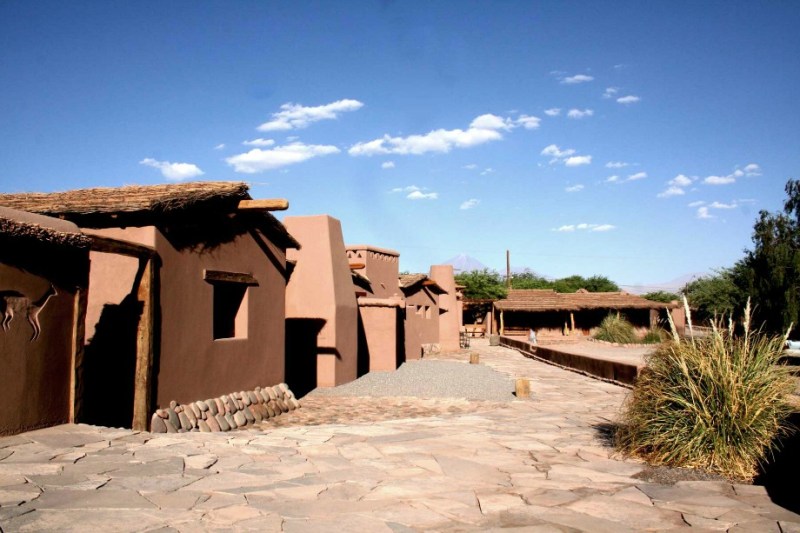
With unclear route signage, ghastly road conditions, lack of cell phone signal and sheer isolation combined with acute altitude sickness and solar radiation, the placid terrain surrounding the Chilean town of San Pedro de Atacama is more threatening than it appears. The small 15th century mining settlement lies 7,900 feet above sea level and is part of the Atacama plateau, reportedly the most arid place on our planet – but thanks to bus connections to both Calama in Chile and Salta in Argentina, San Pedro acts as a gateway to the regions spectacular landforms; lunar valleys and vast salt flats, perhaps only comparable in beauty to those found around the Himalayas.
The Hotel Altiplanico lies on the outskirts of town but is still within walking distance of everything worth walking to. It also faces the Licancabur Volcano; a majestic work of nature, which by the way, is still pretty active. The 29 rooms are arranged in three semi circles around manicured gardens. The buildings, designed to reflect the regions native Indian heritage, have been constructed with thick earthen walls, straw lined ceilings and small windows to keep the indoor temperature stable. Although there are daytime lows of 65 in winter and highs of 85 in summer, the thermometer frequently drops below freezing through the night. There are plenty of cheap and cheerful cafés scattered around the village but otherwise the Altiplanico has a delightful daily changing menu influenced by Peruvian and Chilean cuisine, with local staple ingredients including quinoa, scallops, blue potatoes and the syrupy chanar fruit.
This is paradise for landscape lovers; the Valle de la Luna (5 miles south east), Salar de Atacama (34 miles south) and El Tatio geyser field (62 miles north) are all focus attractions and plenty of tour operators in San Pedro organize daily visits to these sites. The Salar de Atacama is the second largest salt flat in the world; a mesmerizing expanse of whiteness peppered with pink flamingos that thrive in the saline environment. At night the lack of light pollution allows for the clearest views of the starry skies – so be sure to pack a proper camera and no iPhone nonsense.


